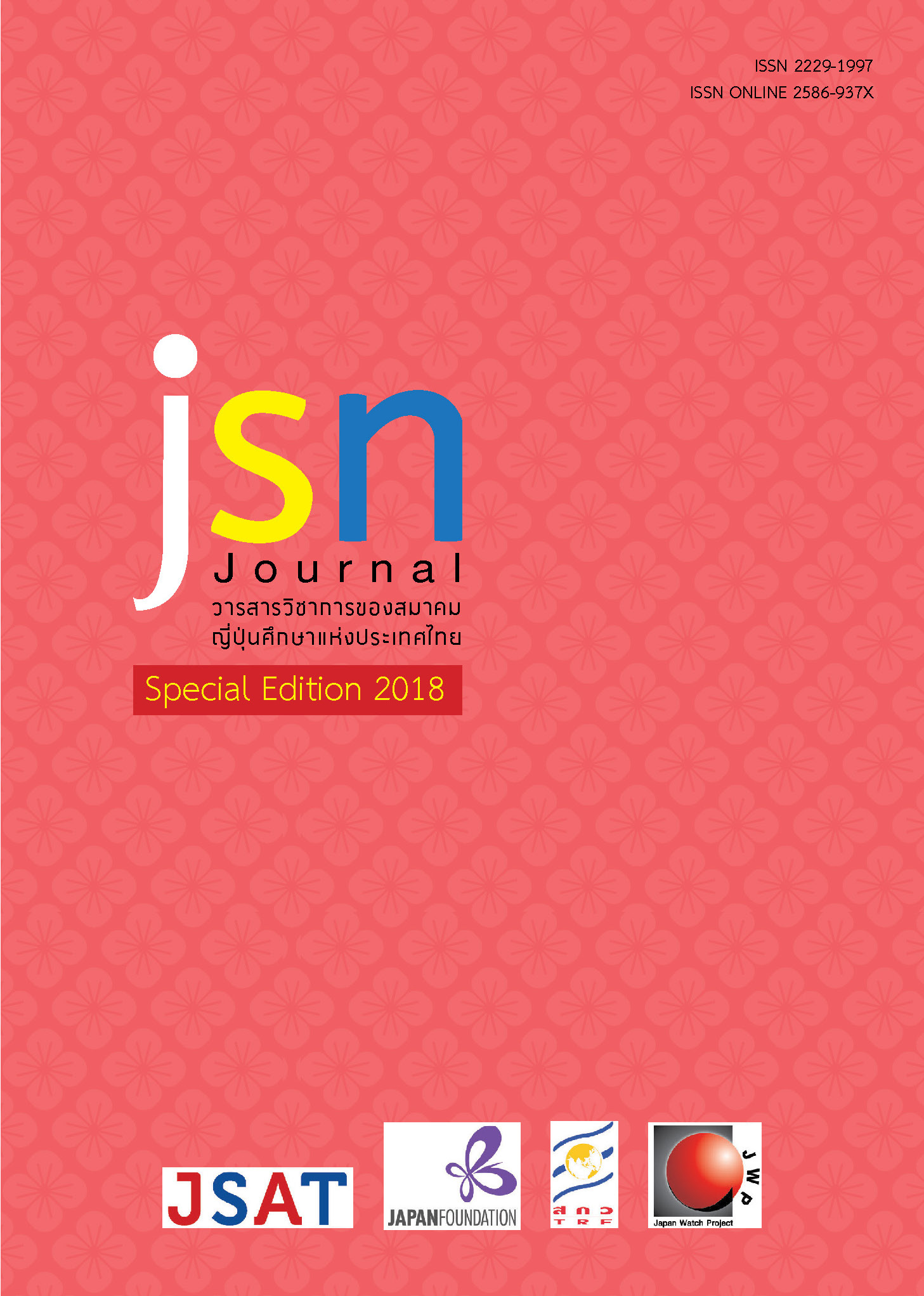The responsive strategies for EV-shift in Japanese automotive industry: Case study of Toyota Group in Japan
Main Article Content
Abstract
The advancement of the electric vehicle shift (EV-shift) since the mid of 2017 has accelerated the significant change in automotive industry within world economic leading countries, especially Japan. This article’s purpose is to clarify the background of EV-shift, its impacts on Japanese automotive industry and automotive corporations’ adoption. The article focuses on the case of Toyota group in Japan utilizing the documentary method. Data suggests that EV-shift has not only been accelerated by environmental concern, but also economic benefits. Initially, Toyota confronted the innovator’s dilemma, so it did not emphasize EV technology, as such this disruptive innovation potentially brought instability on its business structure. However, since the late 2017, Toyota has established three responsive strategies for EV-shift. These strategies are 1) Collaborated EV-research with external partner, 2) Reformation of suppliers’ roles and 3) Changing position from automotive to mobility company.
Article Details
ข้อความและข้อคิดเห็นต่างๆ ในบทความเป็นของผู้เขียนบทความนั้นๆ ไม่ใช่ความเห็นของกองบรรณาธิการหรือของวารสาร jsn Journal
References
ทีดีอาร์ไอ. (2017). ทิศทางยานยนต์ยุคใหม่ในประเทศไทย. สืบค้นจาก www.tdri.or.th/2017/09/the-future-of-thailands-automotive-industry/
ยศพงษ์ ลออนวล. (2015). การศึกษาการพัฒนาของเทคโนโลยียานยนต์ไฟฟ้าและผลกระทบที่เกิดขึ้นสาหรับประเทศไทย. สืบค้นจาก www.energyforum.kmutt.ac.th/download/Executive-Summary.pdf
สวทช. (2017). อุตสาหกรรมยานยนต์ไฟฟ้า. สืบค้นจาก www.waa.inter.nstda.or.th/prs/pub/EV.pdf
เอ็นโซล. (2015). โครงการศึกษาการเตรียมความพร้อมรองรับการใช้ยานพาหนะไฟฟ้าในอนาคตสำหรับประเทศไทย. สืบค้นจาก www.eppo.go.th/index.php/th/eppo-intranet/item/7587-stu- re001
Harvard Business Review. (2015). “Tesla’s Not as Disruptive as You Might Think”; Harvard Business Review. May 2015 Issue, pp.22-23.
Nathan Furr and Daniel Snow. (2015). “The Prius Approach How hybrid technologies help companies survive disruption and shape the future”, Harvard Business Review. November 2015 Issue, pp.103-109.
Renault. (2018). Annual Report 2017. Retrieved from www.group.renault.com/wp-content/uploads/2018/06/1803214_renault_ra-2017_gb_mel-2.pdf
United Nation Climate Change. (2018). “The Paris Agreement”. Retrieved from www.unfccc.int/process-and-meetings/the-paris-agreement/the-paris-agreement
浅島亮子,新井美江子 และ 重石岳史(2017).「パナソニック・トヨタが挑むEV覇権」『週刊ダイ ヤモンド』10 (21) ,pp.30-55.
阿部暢仁 (2017).「クルマづくりも一変 : 変革が必要な日本の系列主義」『週刊エコノミスト』9 (12), p.41.
ジェトロ (2017).「2016 年 主要国の自動車生産・販売動向」Retrieved from www.jetro.go.jp/ext_images /_Reports/01/0daa7dee5221f2cd/20170039.pdf
冨岡 耕 (2017) 「エンジンが消える未来 部品会社は生き残れるか」『週刊東洋経済』 10 (21), pp.46-48.
_______ (2018).「始まった異次元の追撃」『週刊東洋経済』3 (10), pp.28-31.
Toyota Global news room (2017).「トヨタ自動車とダイハツ工業、新興国小型車カンパニー を発足」Retrieved from www.newsroom.toyota.co.jp/en/detail/14516513
_______ (2018).「トヨタ自動車、モビリティサービス専用EV“e-Palette Concept”をCESで発 表」Retrieved from www.newsroom.toyota.co.jp/jp/corporate/20508200.html
日経経済新聞 (2017a). 「中国、ガソリン車の生産・販売禁止時期を検討」Retrieved from www.nikkei.com/article/DGXLASDZ11H3L_R10C17A9000000
____________ (2017b). 「インド、HVに高税率 EV促進 唐突との声も」Retrieved from www.nikkei.com/article/DGKKZO1879296012072017FFE000
日産自動車 (2018).「日産の株主について」Retrieved from www.nissan-global.com/JP/IR/STOCK/INFORMATION
Fourin (2017).『FOURIN 世界自動車調査月報』2月号Retrieved from www.fourin.jp/d_Book/mRepo/WORLDMONTH/html5.html#page=1
マイケル・E. ポーター, 竹内 弘高 (2007).『日本の競争戦略』ダイヤモンド社.
町田倉一郎 (2017).「EVに必要な電力政策:電源構成が普及の鍵握る」『週刊エコノミスト』11 (14), pp.38-39.
三菱自動車 (2018).「株主構成」Retrieved from www.mitsubishimotors.com/jp/investors/stockinfo/ overview.html
宮本夏実 (2017a).「Part1|ガソリン車に吹く逆風」『週刊東洋経済』10 (21), pp.34-37.
________(2017b).「EVの実力」『週刊東.洋経済』10 (21), pp.44-45.
________ (2018a).「誰がEV覇権を握るのか」『週刊東洋経済』3 (10), pp.38-39.
________ (2018b).「テクノロジー企業は敵か味方か」『週刊東洋経済』3 (10), pp.47-48.[27] 森川郁子 (2018).「巨人が頼るマツダの開発力」『週刊東洋経済』3 (10), pp.36-37.


